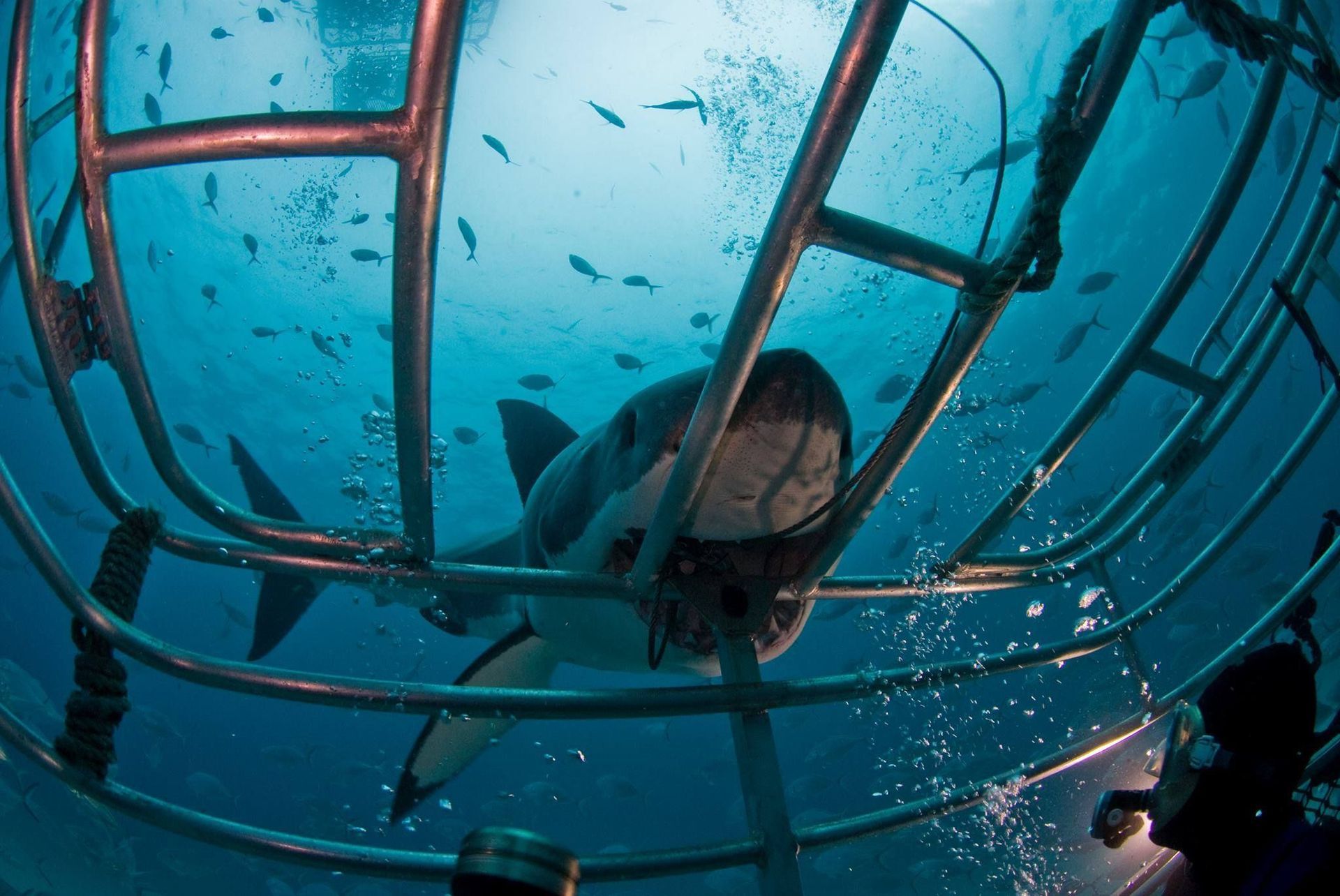To share
Embark on a thrilling journey through
Neptune Islands' adventure activities. Dive with great whites, kayak crystal-clear waters, and hike rugged coastlines. Experience nature's raw beauty and create unforgettable memories.

1. Introduction to the Neptune Islands
Geographic location and characteristics
The Neptune Islands are a group of two main islands and several smaller islets located approximately 70 kilometers south of Port Lincoln, in South Australia. These remote islands, comprising North Neptune and South Neptune, are situated at the entrance to Spencer Gulf. The islands are characterized by their rugged, granite landscapes and are surrounded by the clear, deep waters of the Southern Ocean.
Unique marine ecosystem
The Neptune Islands boast a rich and diverse marine ecosystem, making them a haven for various species of wildlife. The islands serve as a crucial habitat for a colony of long-nosed fur seals, which in turn attracts one of the largest populations of great white sharks in the world. The surrounding waters are also home to an array of fish species, seabirds, and occasionally visited by other marine mammals such as dolphins and whales.
History and conservation efforts
Discovered in 1802 by Matthew Flinders, the Neptune Islands have a long history of human interaction. Initially used for sealing and later for guano mining, the islands are now protected as part of the Neptune Islands Group (Ron and Valerie Taylor) Marine Park. Conservation efforts focus on preserving the unique ecosystem, particularly the great white shark population and their prey species. Strict regulations govern human activities in the area to minimize environmental impact and ensure sustainable tourism practices.
2. Shark Cage Diving: Face-to-Face with Great Whites
Preparation and safety measures
Shark cage diving in the Neptune Islands requires thorough preparation and adherence to strict safety protocols. Licensed operators provide comprehensive briefings on safety procedures, proper use of equipment, and guidelines for responsible interaction with marine life. Participants are fitted with wetsuits and receive instruction on entering and exiting the cage safely. Operators must comply with regulations set by the South Australian government to ensure the activity's sustainability and minimize disturbance to the sharks' natural behavior.
The cage diving experience
The cage diving experience typically begins early in the morning as boats depart from Port Lincoln. Upon reaching the Neptune Islands, the crew anchors the vessel and lowers the shark cage into the water. Divers enter the cage in small groups, usually for 45-minute sessions. From within the cage, participants observe great white sharks in their natural habitat, often witnessing these magnificent predators investigating the cage or pursuing bait lines. Surface viewers can also enjoy excellent shark sightings from the boat's upper deck.
Best times for shark encounters
While great white sharks can be observed year-round at the Neptune Islands, certain periods offer higher chances of encounters. The peak season typically runs from May to October, coinciding with the breeding season of the long-nosed fur seals. During these months, larger numbers of sharks congregate around the islands to feed. Water visibility tends to be better in the winter months, enhancing the viewing experience. However, each season offers unique opportunities, and operators can provide guidance on the best times to visit based on individual preferences and availability.
"The Neptune Islands offer a rare opportunity to witness great white sharks in their natural habitat, providing an unforgettable experience for adventure seekers and marine enthusiasts alike."
3. Marine Wildlife Watching
Observing seals and sea lions
The Neptune Islands are renowned for their diverse marine life, particularly their thriving populations of seals and sea lions. These charismatic pinnipeds can be observed in their natural habitat, providing visitors with an unforgettable wildlife experience.
Australian sea lions and New Zealand fur seals are the primary species found in the area. These marine mammals can often be seen lounging on rocky shores, playfully swimming in the shallows, or engaging in their daily activities. Their behavior offers fascinating insights into their social structures and adaptation to the marine environment.
Visitors can observe these animals from designated viewing areas or during guided boat tours. It's important to maintain a respectful distance to avoid disturbing their natural behavior and habitat.
Dolphin and whale spotting opportunities
The waters surrounding the Neptune Islands are frequented by various cetacean species, making it an excellent location for dolphin and whale watching. Common dolphins are year-round residents, often seen in large pods, showcasing their acrobatic skills as they ride the bow waves of boats.
During the winter months (June to October), the area becomes a prime spot for whale watching. Southern right whales and humpback whales migrate through these waters, offering spectacular sightings of these gentle giants. Occasionally, visitors might even spot orcas or blue whales, though these encounters are less common.
Many tour operators in the region offer specialized whale watching excursions, equipped with hydrophones to listen to whale songs and staffed by knowledgeable marine biologists who provide insightful commentary on cetacean behavior and conservation efforts.
Seabird colonies and their habitats
The Neptune Islands serve as crucial nesting and breeding grounds for numerous seabird species. Birdwatchers and nature enthusiasts will find these islands a paradise for observing diverse avian life in their natural habitats.
Notable species include the little penguin, the world's smallest penguin species, which can be seen waddling along the shorelines or returning from fishing expeditions at dusk. The islands also host significant populations of short-tailed shearwaters, Cape Barren geese, and various species of gulls and terns.
Guided tours to designated viewing areas allow visitors to witness the fascinating behaviors of these seabirds, from courtship rituals to nesting practices. The best times for birdwatching are typically during the breeding seasons, which vary depending on the species but generally peak between September and March.
4. Snorkeling and Freediving Adventures
Exploring vibrant coral reefs
The Neptune Islands boast a rich underwater ecosystem, characterized by vibrant coral reefs teeming with marine life. Snorkeling and freediving in these waters offer an immersive experience in this underwater wonderland.
The reefs surrounding the islands feature a diverse array of hard and soft corals, creating a colorful tapestry of marine life. Snorkelers can expect to encounter a variety of reef fish, including the iconic blue groper, colorful wrasses, and schools of yellowtail. The crystal-clear waters, with visibility often exceeding 20 meters, provide ideal conditions for exploring these underwater habitats.
It's crucial for visitors to practice responsible snorkeling techniques to preserve these delicate ecosystems. Many local operators provide briefings on reef etiquette and conservation practices before each excursion.
Underwater photography opportunities
The Neptune Islands present exceptional opportunities for underwater photography enthusiasts. The clear waters, diverse marine life, and unique underwater landscapes create a perfect canvas for capturing stunning images.
Photographers can document a wide range of subjects, from macro shots of tiny nudibranchs and colorful sea slugs to wide-angle scenes of expansive coral gardens. The presence of larger marine life, such as seals and sea lions, also offers chances for dynamic action shots.
Many tour operators cater to underwater photographers, offering specialized trips with extended bottom times and expert guides who can assist in finding photogenic subjects. It's advisable to bring appropriate underwater camera gear, including wide-angle and macro lenses, to make the most of these photographic opportunities.
Guided snorkeling tours
For those new to snorkeling or those seeking a more structured experience, guided snorkeling tours are an excellent option. These tours are led by experienced local guides who are well-versed in the area's marine ecology and can provide valuable insights into the underwater world.
Guided tours typically include all necessary equipment, safety briefings, and often feature pre-selected sites known for their abundance of marine life or unique features. Guides can help identify various species, explain ecological relationships, and ensure participants adhere to responsible snorkeling practices.
Many operators offer tours catering to different skill levels, from beginners to advanced snorkelers. Some tours also incorporate educational components, focusing on marine conservation and the importance of preserving these unique ecosystems for future generations.
5. Fishing Expeditions in Neptune Waters
Popular fishing spots and techniques
The Neptune Islands offer a wealth of fishing opportunities for both novice and experienced anglers. Several prime locations stand out:
- Shark Alley: Known for its diverse marine life, this area is excellent for deep-sea fishing.
- The Bight: A shallow area perfect for shore fishing and catching smaller species.
- North Neptune Island: Offers rocky outcrops ideal for targeting larger fish species.
Common fishing techniques employed in these waters include:
- Bottom fishing: Effective for catching species like snapper and whiting.
- Trolling: Ideal for targeting tuna and kingfish in deeper waters.
- Jigging: Popular for catching squid and cuttlefish around the islands.
Seasonal catch varieties
The Neptune Islands' waters host a variety of fish species throughout the year:
- Summer (December-February): Bluefin tuna, kingfish, and snapper are abundant.
- Autumn (March-May): Excellent time for catching whiting and garfish.
- Winter (June-August): Southern rock lobster season begins, and mulloway become more active.
- Spring (September-November): King George whiting and squid are plentiful.
It's important to note that catch limits and regulations may vary by season to ensure sustainable fishing practices.
Sustainable fishing practices
To preserve the marine ecosystem of the Neptune Islands, local authorities and fishing tour operators promote several sustainable fishing practices:
- Catch and release: Encouraging anglers to release fish that are not needed for consumption.
- Size and bag limits: Adhering to strict regulations on the number and size of fish that can be kept.
- Using circle hooks: These reduce the likelihood of injuring fish that are to be released.
- Avoiding protected areas: Respecting marine park boundaries and no-fishing zones.
"Responsible fishing ensures that future generations can enjoy the same thrilling experiences in these waters." - Local fishing guide
6. Island Exploration and Hiking
Scenic coastal trails
The Neptune Islands offer several breathtaking coastal trails for hikers of all skill levels:
- Lighthouse Loop: A 3-kilometer trail circling the North Neptune Island lighthouse, offering panoramic ocean views.
- Seal Bay Walk: A 2-kilometer path along the southern coast of South Neptune Island, providing opportunities to observe seal colonies.
- Neptune's Ridge Trail: A more challenging 5-kilometer hike across the central part of North Neptune Island, showcasing diverse island landscapes.
These trails are best explored during the cooler months of April to October when temperatures are milder.
Lighthouse tours and historical sites
The islands boast significant historical landmarks:
- North Neptune Island Lighthouse: Built in 1901, this lighthouse is open for guided tours, offering insights into the island's maritime history.
- Shipwreck Point: Located on South Neptune Island, this site commemorates the numerous shipwrecks that occurred in the treacherous waters surrounding the islands.
- Old Whaling Station: Remnants of a 19th-century whaling operation can be found on North Neptune Island, providing a glimpse into the area's industrial past.
Guided tours of these sites are available, typically lasting 2-3 hours and led by knowledgeable local historians.
Flora and fauna of the islands
The Neptune Islands host a unique ecosystem:
Flora:
- Coastal shrublands: Dominated by salt-tolerant species like pigface and coast daisy-bush.
- Native grasses: Including tussock grass and spear grass, which help stabilize the island's sandy soils.
- Rare plant species: The islands are home to several endemic plant species, including the Neptune Islands correa.
Fauna:
- Marine mammals: Home to a large colony of New Zealand fur seals and occasional visits from Australian sea lions.
- Seabirds: Various species nest on the islands, including little penguins, short-tailed shearwaters, and Cape Barren geese.
- Reptiles: The islands host several lizard species, including the Neptune Islands dragon lizard, found nowhere else in the world.
"The Neptune Islands' ecosystem is a delicate balance of interdependent species, making conservation efforts crucial for its survival." - Marine biologist
7. Responsible Tourism and Conservation
Environmental impact of tourism
The Neptune Islands, known for their thrilling great white shark encounters, face environmental challenges due to increased tourism. The influx of visitors can lead to:
- Disturbance of marine ecosystems
- Increased waste generation
- Potential harm to local wildlife
To mitigate these impacts, tour operators and visitors must adhere to strict guidelines. These include maintaining safe distances from marine life, proper waste management, and limiting the number of daily tours.
Supporting local conservation projects
Visitors to the Neptune Islands can contribute to conservation efforts by:
- Participating in citizen science programs
- Donating to local marine research initiatives
- Choosing tour operators that actively support conservation
One notable project is the Neptune Islands Conservation Park monitoring program, which tracks great white shark populations and behavior. Tourists can assist researchers by reporting sightings and sharing photographs for identification purposes.
Eco-friendly accommodations and practices
Sustainable tourism in the Neptune Islands extends beyond diving activities. Eco-friendly accommodations and practices include:
- Solar-powered liveaboard vessels
- Use of biodegradable cleaning products
- Implementation of water conservation measures
Visitors are encouraged to choose operators that prioritize these sustainable practices, thereby reducing their overall environmental footprint.
Summary
Diving with great white sharks in the Neptune Islands offers an unparalleled adventure for marine enthusiasts. This experience combines the thrill of encountering apex predators with the beauty of the Southern Ocean's ecosystem. However, it's crucial to approach these adventures with respect for the marine environment and a commitment to responsible tourism practices.
By choosing eco-friendly operators, supporting local conservation efforts, and adhering to guidelines, visitors can ensure their experience contributes positively to the preservation of this unique marine habitat. The Neptune Islands serve as a testament to the delicate balance between tourism and conservation, offering valuable lessons for sustainable marine tourism worldwide.
Frequently Asked Questions
What is the best time to visit the Neptune Islands for shark diving?
The peak season for great white shark sightings is from May to October. During these months, the water temperature and seal populations create ideal conditions for shark activity.
Are cage dives safe for inexperienced divers?
Yes, cage dives are designed to be safe for all levels of experience. No diving certification is required, and operators provide thorough safety briefings and supervision.
How long do typical Neptune Islands diving tours last?
Most tours range from single-day excursions to multi-day liveaboard experiences. Day trips usually involve 4-6 hours at sea, while liveaboard trips can last 3-5 days.
What other marine life can be seen besides great white sharks?
The Neptune Islands are home to diverse marine life, including Australian sea lions, New Zealand fur seals, dolphins, and various seabird species.
How can I minimize my environmental impact during my visit?
To minimize your impact:
- Choose eco-certified tour operators
- Follow all guidelines provided by your guides
- Avoid single-use plastics
- Participate in any offered conservation activities




